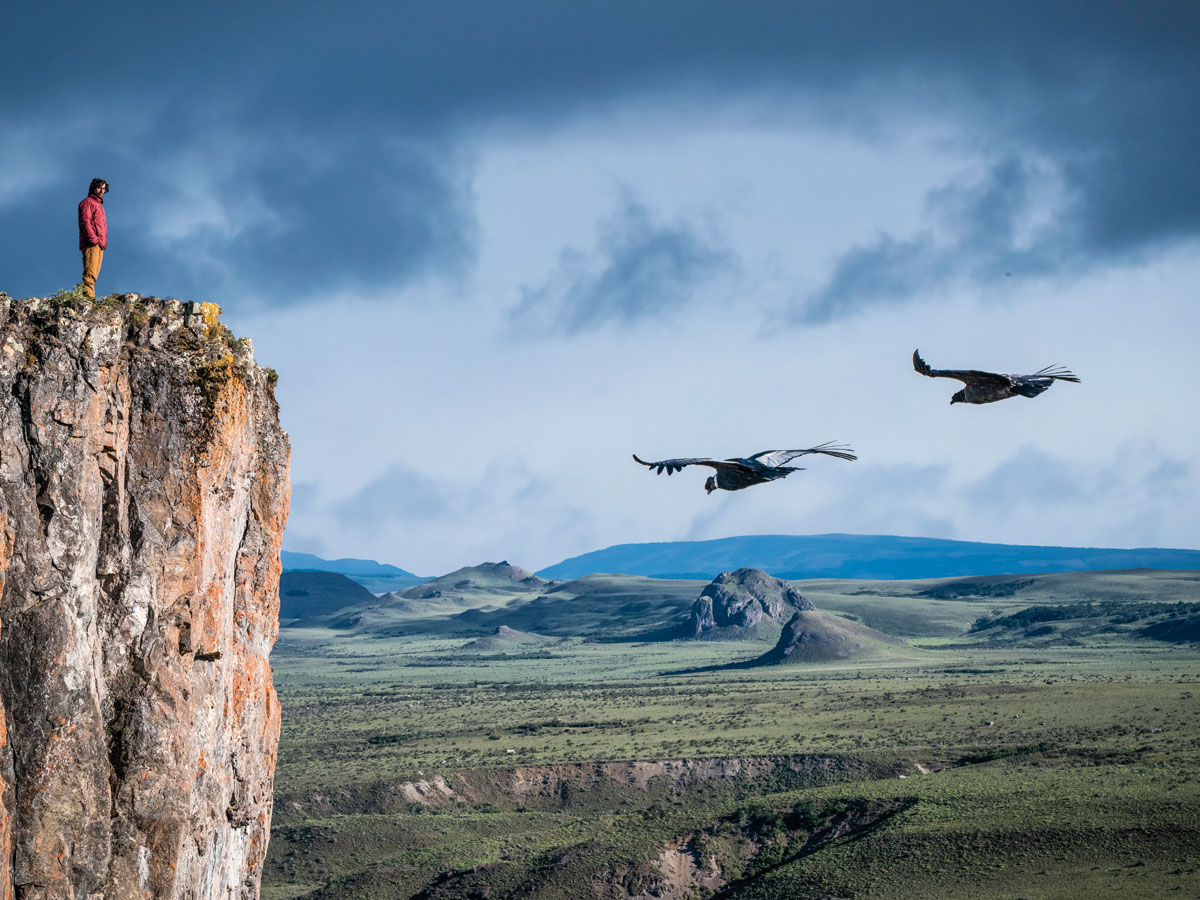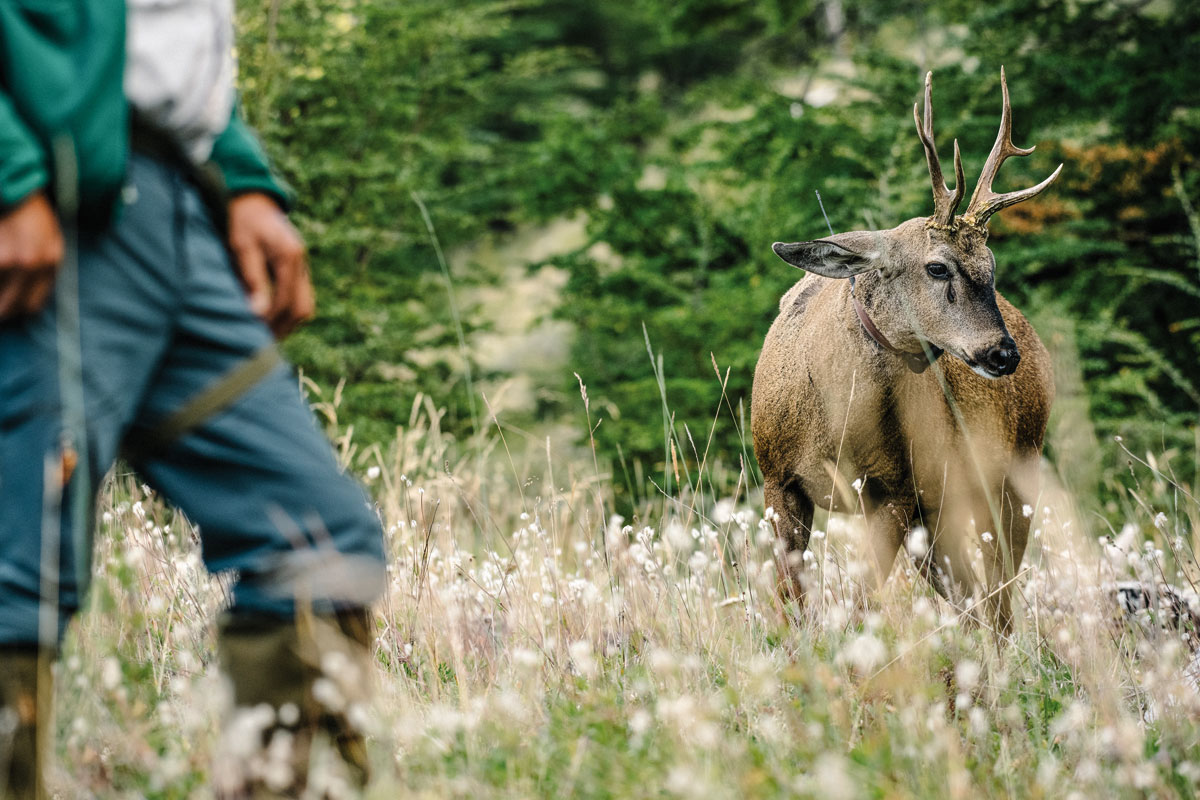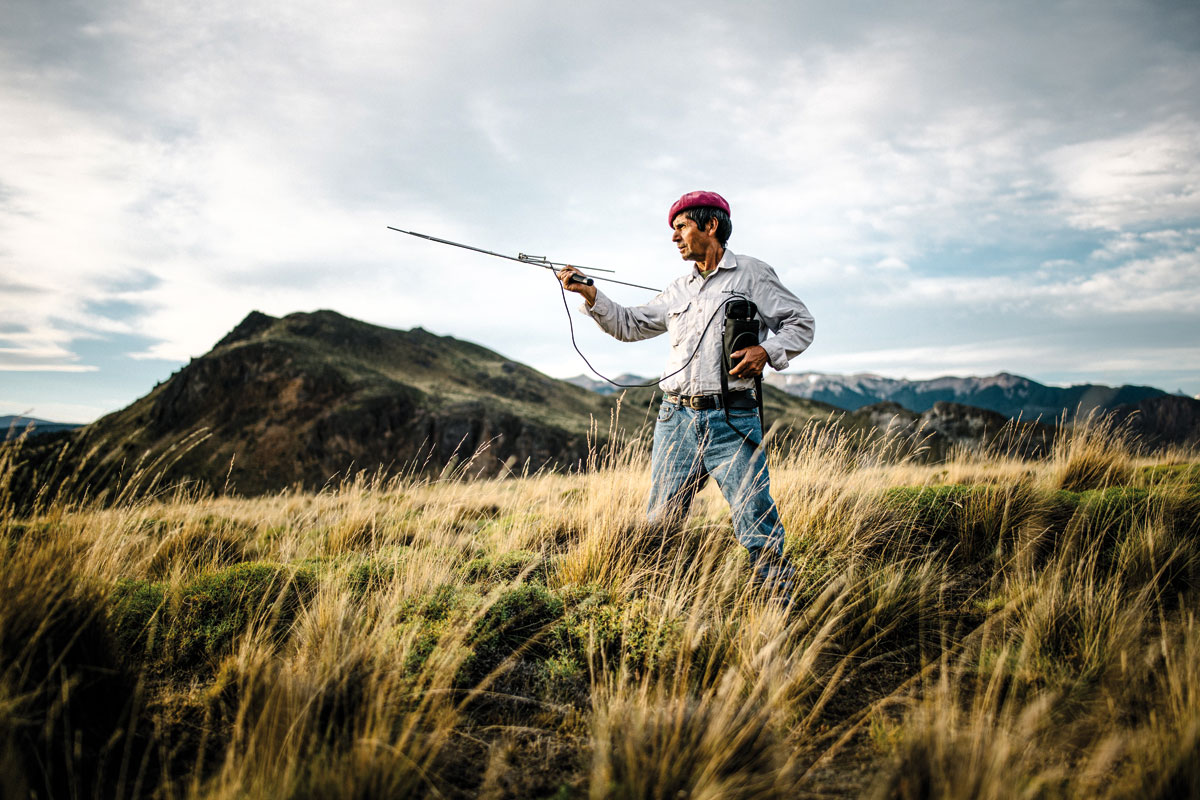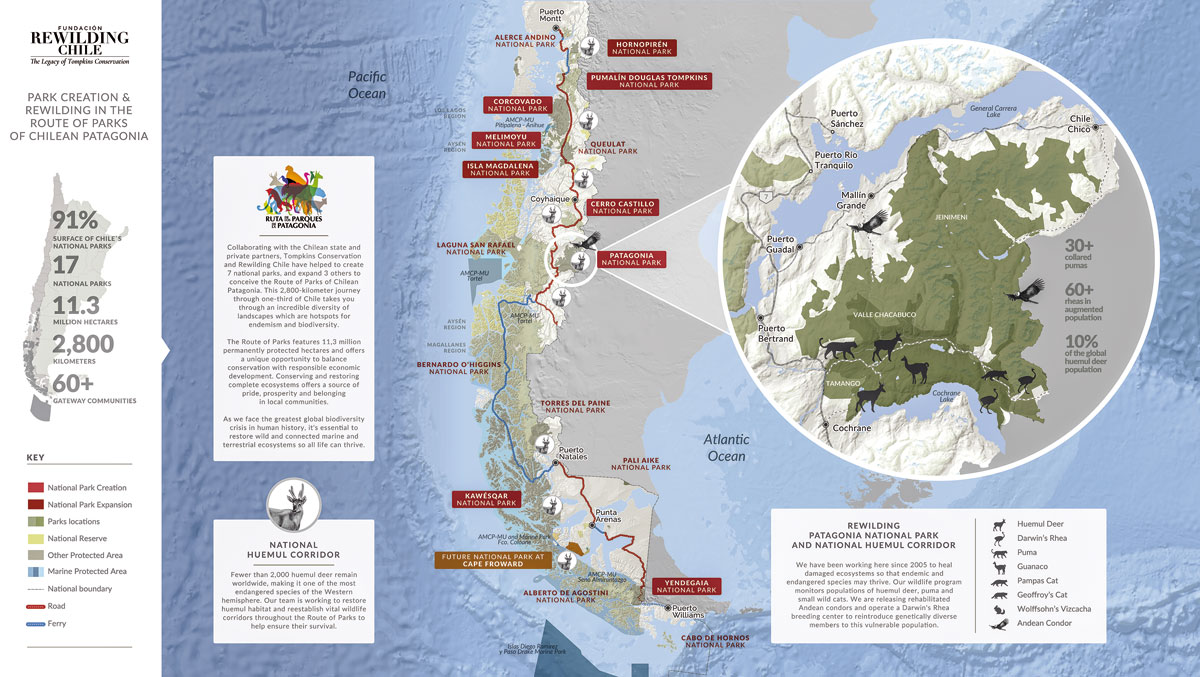The Wild Public-Private Partnership
First published in Sanctuary Asia,
Vol. 43
No. 10,
October 2023
By Carolina Morgado
Nestled at the southern tip of South America, Chilean Patagonia stands as a symbol of untamed wilderness, and much more. Here, nature reigns supreme. Towering peaks adorned with ancient glaciers stand in stoic majesty, and windswept plains invite the imagination to roam as free as the guanacos that gracefully traverse through the Patagonian steppe. Meanwhile, soaring high in the far reaches of the sky, the Andean Condor observes omnipresent in search of carrion, offering a living testament to the importance of complete trophic webs.

The Andean Condor is living testament to the importance of complete trophic webs in Chilean Patagonia. Biodiversity has benefited immensely from the conservation and restoration efforts of the Tomkins Conservation and Rewilding Chile. Photo: Dietmar Denger in collaboration with Servicio Nacional de Turismo (SERNATUR).
An intricate tapestry of ecosystems and species thrive in this landscape-level sanctuary for biodiversity. Within the realm of its temperate rainforests, lush emerald canopies shelter elusive creatures such as the endangered Darwin’s frog, the only amphibian known to exhibit male egg swallowing, nurturing its offspring within his vocal sac. Along 2,800 km. of coast, an intricate web of fjords has carved its way through, forming stunning seascapes where the cold waters mirror the fading traces of the last ice age. Beneath the surface, giant kelp forests stand as guardians of the underwater world, nurturing and protecting a remarkable array of species, while sequestering large amounts of CO2 and contributing to climate change mitigation.
Large-scale rewilding
These landscapes and seascapes enchanted Douglas and Kristine Tompkins, North American philanthropists, who felt an irresistible pull that transcended the confines of their former corporate lives. Conscious of the accelerating forces of the global eco-social crisis, and drawn by a vision to preserve wilderness, they settled in Chilean Patagonia in the early 1990s and devoted their full energies to acquiring tracts of land towards a mission of landscape-level conservation. By forming fearless local teams in the field and working closely with multiple Chilean Government administrations, they set their sights on a strategy of leveraging Protected Areas, where the lands they managed to acquire were donated to the country, with a commitment that the Chilean state will convert or reclassify surrounding public areas for the creation of vast national parks.
After almost three decades of relentless work through their foundation, Tompkins Conservation, several decrees were signed with the Chilean Government to manage a land donation of 507,000 hectares, one of the largest private land donations to a government in history. Along with the inclusion of 985,000 hectares of state-owned land and the reclassification of 2.6 million hectares of reserves into national parks, these efforts added over four million hectares to the country’s system of Protected Areas. However, the creation of national parks is just the beginning; it must be accompanied by complementary actions that amplify the impact and scope of conservation. This vision gave birth to Rewilding Chile, carrying on the legacy of Tompkins Conservation to achieve large-scale rewilding initiatives focused on protecting and restoring ecosystems in Chilean Patagonia to their full potential.

A male huemul, one of the most endangered deer species in the Americas, being monitored by the Rewilding Chile team. Today, conservation efforts for the species, of which only 1,500 individuals remain across its entire distribution range, are focused on the Huemul National Corridor initiative, working in conjunction with the Chilean government to safeguard the species as a whole. Photo: Jan Vincent Kleine.
An exemplary testament to this commitment is Patagonia National Park in Chile, where the foundation has taken on the challenge of transforming an extensive livestock ranch into a functional Protected Area. With the dedicated efforts of local conservation managers and rangers, significant progress has been secured in the revival of one of the most endangered deer species in the Americas, the South Andean or huemul deer Hippocamelus bisulcus. Presently, Rewilding Chile is leading a new collaborative strategy with the Chilean government, the National Huemul Corridor, aiming to enhance the viability and connectivity of deer sub-populations across the entire species distribution range.
Furthermore, the team has achieved a significant milestone by restoring and safeguarding the habitat of the Darwin’s Rhea Rhea pennata, an ostrich-like bird critically threatened at the regional level, with less than 20 individuals remaining in the area when the organisation had first initiated its efforts. Through the establishment of a specialised centre for the reproduction of this species, the rheas have been successfully rewilded in an area where they were once historically abundant but had been displaced on account of past overgrazing practices. At present, the numbers of the species have tripled.

Don Arcilio, once a ‘leonero’ or puma hunter, now works with the wildlife team of Rewilding Chile in the tracking and monitoring programme for the species. Photo: Jan Vincent Kleine.
Community partnerships
The overgrazing issue has been tackled comprehensively, drawing from a transdisciplinary approach to offer valuable insights for the foundation’s strategies. Patagonia’s cultural heritage of cattle and sheep ranching has deeply influenced the landscape and way of life for its rural inhabitants. Thus, an in-depth understanding of the region’s historic dynamics has been pivotal in effectively addressing the persistent human-wildlife conflicts, particularly concerning the interactions between the puma and sheep ranchers. A notable aspect of our wildlife recovery programme is that some of our most knowledgeable staff members were once livestock workers who used to track and hunt pumas. Their firsthand experience has brought a unique perspective to the team, fostering greater empathy and driving effective conservation efforts that promote harmonious coexistence between humans and wildlife.
Recognising the crucial role of engaging and empowering local communities in successful conservation, the foundation has made a steadfast commitment to forging a strong connection between society and its national parks. To achieve this, the foundation has implemented a series of place-based ‘Friends of Parks’ programmes, designed to cultivate a sense of ownership and stewardship among the communities residing around the Protected Areas. Currently, three national parks have benefited from this programme, while we are actively working to expand it to two more parks within the next year. Through these initiatives, we aim to foster a deep-rooted bond between people and their natural heritage, ensuring that conservation becomes a collective endeavour that thrives on local involvement.

Park creation and rewilding in the Route of Parks of Patagonia. Photo: Rewilding Chile.
At present, Rewilding Chile’s work moves not only towards countering the crises of extinction and climate change, but we also acknowledge that the future of conservation hinges on influencing the economic development of the region. Thus, we are advocating for the Chilean Patagonia Route of Parks, a visionary approach that views tourism and related activities as powerful catalysts for local economic growth, placing a strong emphasis on attracting investments that contribute to the preservation of our beloved national parks. By nurturing this symbiotic relationship between nature and sustainable tourism, our goal is to create a future of well-being, benefiting both the majestic wilderness of Patagonia and the communities that call this breathtaking region home.
Carolina Morgado is the Executive Director of Rewilding Chile, formerly Tompkins Conservation Chile. She has played a pivotal role in orchestrating the substantial land donation to the Chilean government,and is working toward the establishment of several terrestrial and marine protected areas.





